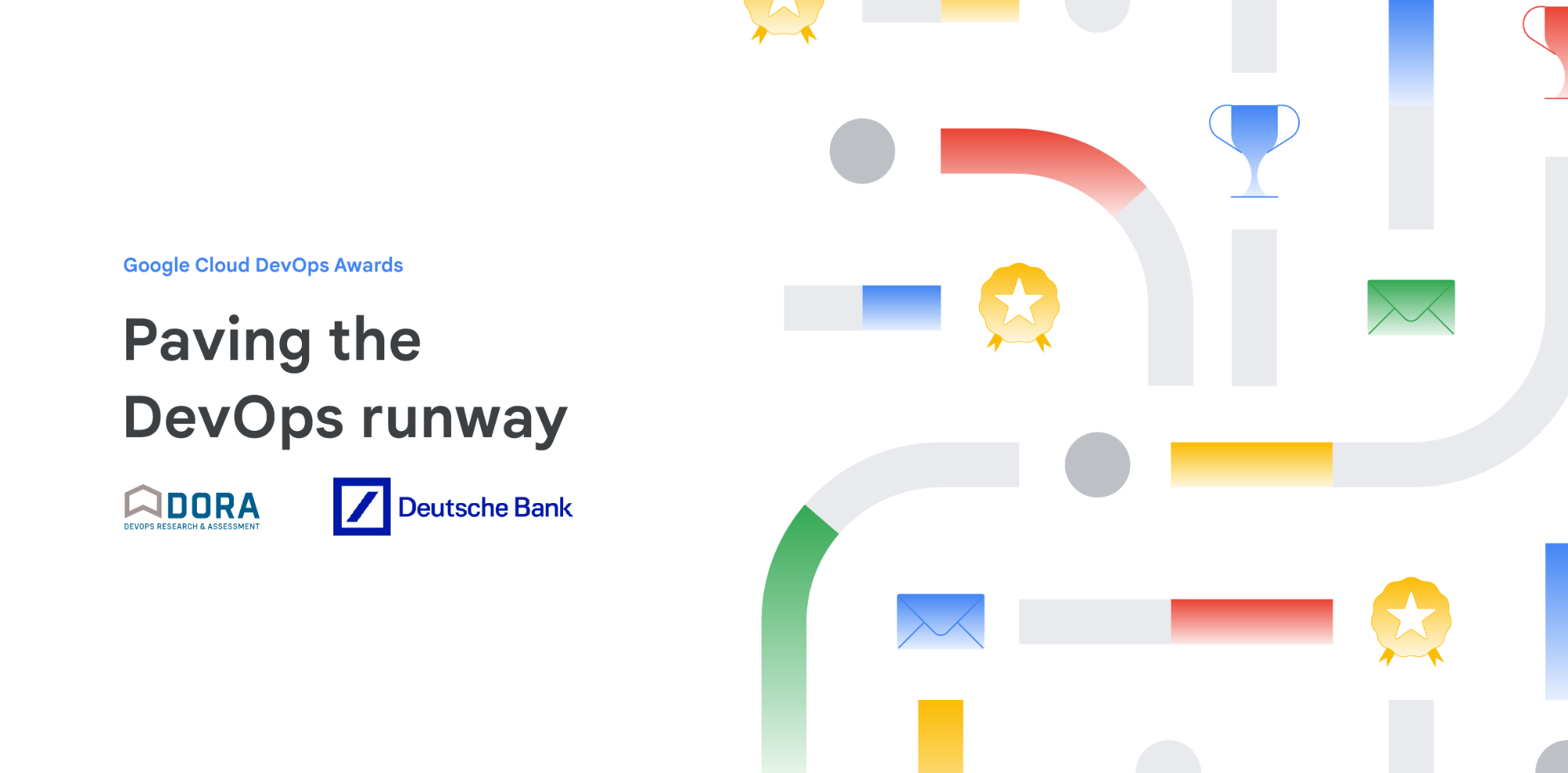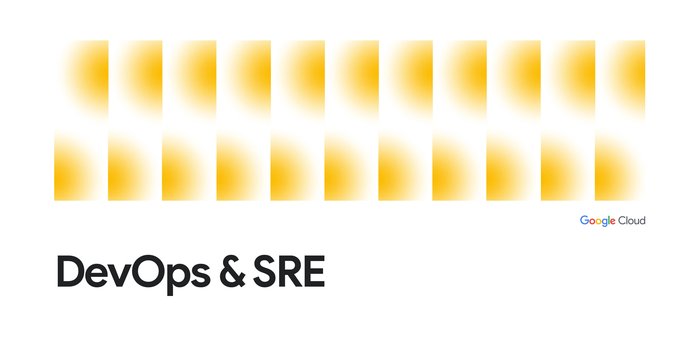DevOps Awards winner Deutsche Bank on paving the ‘DevOps Runway’

Deepak Sareen
Head of DevOps Strategy and Transformation – RFT, Deutsche Bank
In this blog post, we’re highlighting Deutsche Bank for the DevOps achievements that earned them the ‘Paving the DevOps runway’ award in the 2022 DevOps Awards. If you want to learn more about the winners and how they used DORA metrics and practices to grow their businesses, start here.
Founded in 1870, Deutsche Bank is Germany’s leading bank and a global financial services provider to companies, governments, institutional investors, small- and medium-sized businesses, and individuals.
Challenges
With an extensive history and global operations, Deutsche Bank had developed a technology infrastructure built from legacy systems. With duplicate capabilities and pockets of automation, the bank knew it needed a more consistent approach that decreased risk, complexity, and cost, while introducing new products and services to their customers. The bank identified three aspects to meet its needs while reducing costs and maximizing efficiency:
A move from mainly using external developers to stronger in-house engineering capabilities
Standardized solutions to reduce technical debt and a lack of uniformity
Documented records of problems faced, how they were solved, difficulties encountered, and steps taken to mitigate risks while resolving them
Objectives
To make this work, the company needed a holistic approach with a strategy that redesigned its system architecture while streamlining applications. It would be able to reduce risk by increasing automation and minimizing complexity with standardized processes and components — all while cutting costs. This goal would help the bank introduce innovative products and services while eliminating manual maintenance.
The solution was to move to the cloud and co-innovate with Google Cloud on new products and services. But to get the most out of the cloud, Deutsche Bank realized that it would need strong DevOps practices to encourage collaboration between teams while maintaining a rigorous implementation of technical and compliance requirements. The bank identified many benefits of a successful DevOps implementation, including:
Increased delivery speed: Improved velocity allows teams to stay one step ahead of competitors who may not be applying the same methodologies.
Increased capacity: Removing infrastructure management frees teams up for more frequent deployments with less risk, as well as the scale to meet customer demand while implementing the latest technologies.
Increased quality: Time that would have been spent on activities like testing and documentation can now go to implementing increasingly high-stakes initiatives with more confidence.
Solution
After holding regular meetings and brainstorming sessions where Google Cloud went over
offerings and answered any questions, the bank was able to develop the DevOps
Runway. The DevOps Runway provides an exhaustive engineering process outlining every step
of app migration and cloud-native app development — from discovery to decommission — including the necessary procedures and clear explanations on how to complete each of them.
The Runway is made up of seven major steps, each of which has sub-steps:
Discovery and design: This first stage ensures that teams take the appropriate steps when planning apps to ensure DevOps best practices. Teams start by selecting tools from a list of Deutsche Bank-approved Google Cloud resources, bypassing the confusion caused by having several solutions for the same challenge. Runway then presents a list of six Deutsche Bank-defined R-type strategies to choose from and offers visibility into architecture decision records (ADRs) that have already been approved, so teams don’t have to reinvent the wheel. Once the team better understands the needs of its project, the Application Discovery Questionnaire offers questions with samples to help teams pick the best course of action, saving time and effort on long planning discussions.
Landing Zone setup: To help teams skip infra-level configuration and focus on application-level implementations, Deutsche Bank and Google Cloud worked together to develop Landing Zones (LZs). These LZs give teams access to GitHub, Terraform, and Google Cloud folders, as well as a framework to embed all required Executable Reference implementation (ERI) plugins and Terraform modules within the Private Module Registry (PMR). Once that’s done, they just need to create the Google Cloud project, network subnets, and credentials to ensure that they meet all of the resource requirements, and the application’s Dev Landing Zone is ready.
Source code management: As the bank migrated from bitbucket to GitHub, it was equally important for teams to migrate their code and adopt a branching strategy in line with recommended Gitflow or Truck-based development best practices. Teams also have to configure four-eye checks and ensure the code is only being merged post-PR reviews and the build is successful.
Application and data migration: During app migration, the bank also migrated its database with the equivalent Google Cloud resources. This important step ensures that the data is securely moved to the public cloud with the required set of recommendations and tools for migration and automatic deployments. This step also ensures that the data backup and recovery is evaluated and configured.
CI/CD setup: Hybrid adoption requires strong CI/CD. For the bank, this is built on Google Cloud solutions, including infrastructure pipelines with Terraform enterprise integrated with Github workflows. Teams set up application and database automated CI/CD deployments with recommended toolsets such as GitHub workflow, Docker, Helm, and Liquibase. The bank also adopted standardized CI/CD blueprints across the Google Cloud adoption program to leverage proven processes.
Monitoring: Since Google Cloud manages both the on-prem infrastructure and the cloud infrastructure, teams are freed from these continuous monitoring tasks, but there are aspects that still require monitoring. The Runway outlines solutions to create dashboards for application monitoring to visualize ever-evolving processes such as application and infrastructure monitoring within a hybrid environment.
Decommissioning: The Runway also includes end-of-life planning for applications, including decommissioning applications on Google Cloud and their associated infrastructure. When applicable, the team can run apps in parallel both on-prem and on Google Cloud for a predetermined period, with continued end user validation to ensure that the application remains operational without any data loss.
Results
Runway made it easier for Deutsche Bank to share and implement Google Cloud DevOps best
practices throughout the organization, which led to both immediate and long-term benefits. With Runway, Deutsche Bank had an authoritative source for information and uniform solutions that boosted Google Cloud onboarding. It also opened up the ability to provide a single channel to share the latest advanced information to teams across the company.
Between the speed and managed infrastructure of the cloud and the streamlined DevOps-driven decision-making process, Runway unlocked the potential and productivity of developers and engineers. Teams can now make more informed plans with ADRs, blueprints, and ERIs, moving from confusion to action far quicker than before. On average, developers reported getting back an additional 40-50% of their time, letting them focus on creating better apps and customer experience.
Stay tuned for the rest of the series highlighting the DevOps Award Winners and read the 2022 State of DevOps report to dive deeper into the DORA research.



